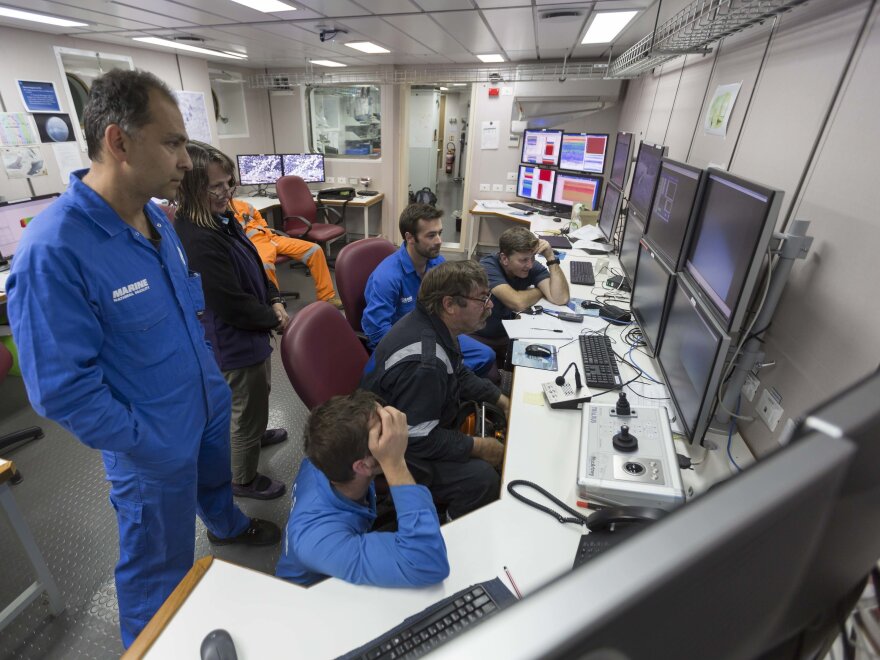Far below the surface of the ocean, off the coast of eastern Australia, is an area simply known as "the abyss." The largest and deepest habitat on the planet, the abyssal zone stretches well beyond Australia's waters and spans half the world's oceans — but it remains largely unexplored.
Marine biologist Tim O'Hara recently set out change that, on a monthlong expedition with about two dozen scientists from seven countries. The voyage dredged up hundreds of previously unknown species along the way.
All Things Considered's Ari Shapiro spoke with O'Hara via satellite phone on his final day aboard the research vessel Investigator.

"It is really a voyage of discovery," O'Hara says. "It's kind of amazing in the 21st century that you can still do that, but yes you can!"

The team has been sending equipment down to depths of 4,000 meters, or about 13,000 feet, to scrape along the bottom of the sea floor and collect creatures who call the abyss home. It's a tough ecosystem to live in, O'Hara says.
"It's a place of crushing temperatures and no light and very little food," he says. "One of the great extreme environments of the planet."
Among the notable finds of the month was a "faceless fish" that hadn't been documented in the waters of Australia since 1873. The eel-like fish has a mouth on the bottom of its body and eyes buried deep underneath its skin. It sucks up crustaceans and other tiny sea creatures off the bottom of the ocean floor, O'Hara says.

The team has been working 12-hour days for 31 days straight, bringing up hundreds of other species that have been meticulously sorted, photographed and documented. O'Hara estimates that over a third of the animals they've collected are previously unknown, but says it will probably be a couple of years before they can catalog them all.
"Some people are a bit disturbed that we go in there and we're actually bringing animals back to the surface to look at, but really science demands that," O'Hara says. "We really need to see animals in detail, we want to see the DNA, we need to bring them to the attention of people — otherwise it's just another hidden world."

And although the world they are exploring has never been touched by humans, there's still plenty of signs of human life from above — in the form of trash and microplastics.

"Every single net that we put down there picked up some rubbish: paint cans, old fishing wire, bottles," O'Hara says.
The Investigator completed its voyage of discovery Thursday. Next, the scientists will will begin the task of researching and preserving their findings on dry land.
But first, O'Hara says he's ready for a drink.
"It's a dry ship, so we don't get to drink at sea," he says. "We're having a 'retox' when we get back to shore."
Copyright 2023 NPR. To see more, visit https://www.npr.org.


